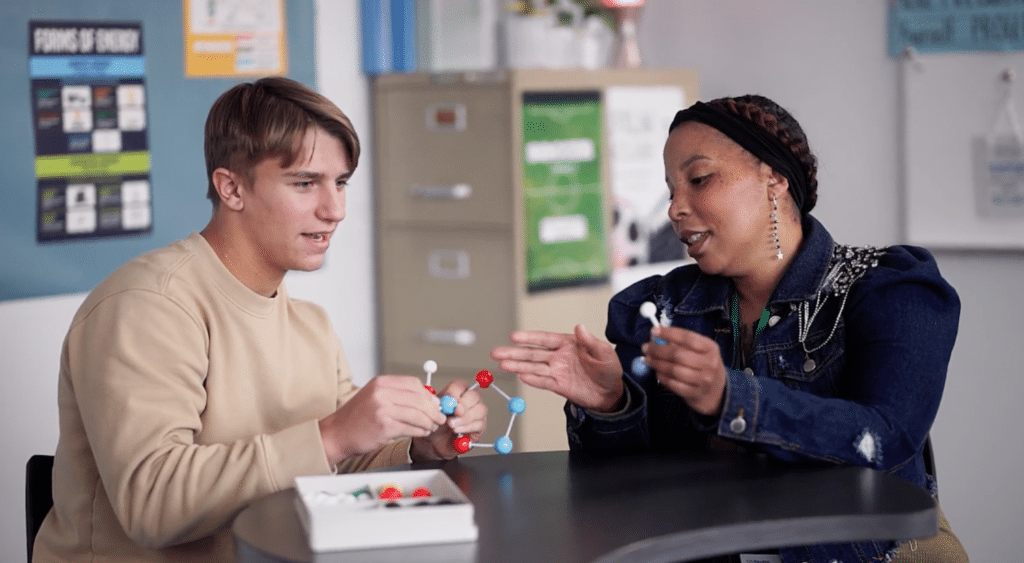How to become a substitute teacher in New York.

New York has just a few requirements to become a substitute teacher. No degree, certification, or credentialing beyond a high school diploma is required. And with nearly 700 school districts educating about 2.5 million students across the state, there are plenty of substitute teaching opportunities available.
Let’s take a look at the minimum state-wide requirements to become a substitute teacher in New York.
Minimum New York state requirements, at a glance*:
- Education: High school diploma or equivalent
- Age: 18 years old
- Employment verification to work in the U.S.
- Fingerprinting
- Criminal background check
A deeper dive into substitute teacher requirements.
There are several pathways to becoming a substitute teacher in New York. The state does not issue substitute teacher certification, and a regular teaching certificate is not required. There are, however, advantages to having one if your goal is to be a substitute teacher in New York.
If you are not certified and are not working toward certification, you can still work as a substitute teacher if you have a high school diploma or equivalent. However, you are limited to no more than 40 days of work in a school or BOCES in a school year. But, in extreme circumstances, employment can be extended up to and beyond 90 days. Here, the district superintendent must show they’ve conducted a good-faith employment search but cannot find an appropriately certified candidate. Or they can show that a particular teacher is needed to work with a specific group or class for a longer period.
To get a teaching certificate in New York, you must have a bachelor’s degree from an approved teacher preparation program at a NYS higher education institution or from a state with a reciprocity agreement with New York. If you are certified, you can work in any capacity, for any number of days, in any number of school districts. However, if you are employed as a substitute teacher for more than 40 days in a single school year by a school district or BOCES, you must be employed in an area for which you are certified.
If you do not have a teaching certificate but are working toward certification (taking college coursework at not less than six semester hours per year), you can work in any capacity, for any number of days, in any number of school districts. However, if you are employed for more than 40 days in a single school year by a school district or BOCES, you must be employed in an area for which you are seeking certification.
Keep in mind that some districts have additional criteria beyond what the state requires. Typically, the requirements for a position are noted in the substitute teacher job description.
Education requirements.
All substitute teachers in New York must have a minimum of a high school diploma or equivalent. However, to work more than 40 days in a school year, you must be certified or working toward certification.
Background check and fingerprinting.
New York places a high priority on student safety, so all substitute teacher applicants in the state are subject to a background check and fingerprinting. The cost for this is about $100.
Employment verification.
All teacher applicants in New York must complete an I-9 form to verify their employment eligibility. To complete this step, you’ll submit an I-9 form with valid identification credentials.
Training.
The state of New York doesn’t require any special training to become a substitute teacher. However, a college education is necessary to become certified, and those holding or working toward substitute teacher certification can work any number of days in a school year.
Getting started as a substitute teacher.
If you’d like to become a substitute teacher in New York, check out the New York State Education Department website for more information.
Want more helpful suggestions on entering the rewarding and satisfying career of substitute teaching? From substitute teacher dress codes to what to bring on your first day, Kelly Education shares everything you need to know about becoming a substitute teacher. Check out all our career advice so you can confidently enter the classroom.
*Information subject to change. This is a general guideline. School districts may have more requirements, in addition to state requirements.

View Related: Applying for jobs Article
You might like
Find your next job
Discover thousands of temporary, full-time, and remote jobs for beginning and experienced job seekers.


